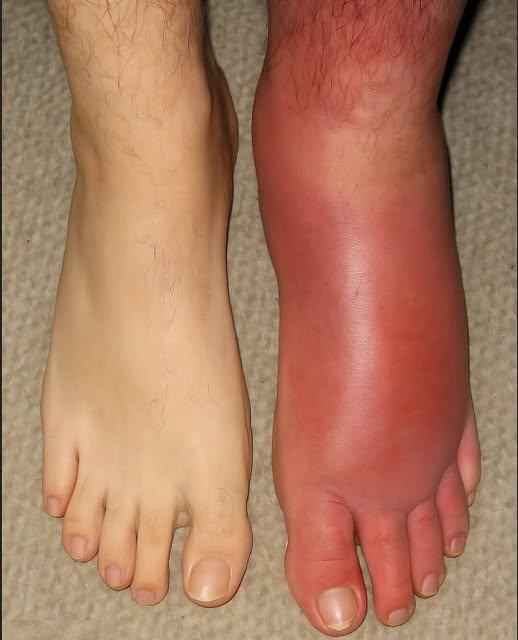Disclaimer: This article is for educational purposes only. It is not a substitute for professional medical advice, diagnosis, or treatment. Always consult your physician or another qualified healthcare provider regarding any medical concerns.
Noticing a bump, spot, or unusual lesion in the genital area can be unsettling. These changes are more common than many realize, and in most cases, they are not dangerous. Still, some conditions require medical evaluation and treatment. Knowing how to recognize what’s harmless and what may need attention can help you respond with confidence instead of fear.
This article outlines the most common causes of genital bumps, warning signs that signal an infection or skin condition, and the situations where a healthcare provider’s input is essential.
Why Do Genital Bumps Appear?
The genital area is a sensitive part of the body, exposed to constant friction, moisture, and grooming practices. As a result, small skin changes are fairly common. These are some of the more frequent, mostly harmless causes:
1. Folliculitis
Folliculitis happens when hair follicles become irritated or infected. Shaving, waxing, or tight clothing can trigger it.
- Appearance: Small red or white bumps, sometimes filled with pus. They may itch or feel tender to the touch.
- Management: Keep the area clean, avoid shaving until it heals, and apply warm compresses. Most cases resolve on their own, but if bumps spread, worsen, or become painful, medical treatment may be required.
2. Ingrown Hairs
When a hair grows back into the skin instead of rising to the surface, it can create a sore bump.
- Appearance: Raised, sometimes painful lumps that may look similar to pimples.
- Management: Gentle exfoliation can help release the hair. Picking or squeezing should be avoided, as this can worsen inflammation or cause infection.
3. Sebaceous Cysts
These cysts develop when oil-producing glands under the skin get blocked.
- Appearance: Smooth, round bumps that may be skin-colored, yellowish, or slightly firm. Typically painless unless infected.
- Management: Most cysts shrink on their own. If one becomes swollen, red, or tender, a doctor may need to drain it.
Conditions That Need Medical Evaluation
While many genital bumps are harmless, others may signal viral, bacterial, or inflammatory conditions. Early recognition and treatment make a significant difference.
Genital Warts (HPV)
Genital warts are caused by certain strains of the human papillomavirus (HPV).
- Appearance: Small, flesh-colored growths that can appear alone or in clusters, sometimes with a cauliflower-like surface.
- Symptoms: Usually painless, but they may cause mild irritation or itching.
- Treatment: Warts may disappear on their own, but they often return. Treatments include topical medications, freezing, or minor surgical procedures. Vaccines can protect against the most dangerous strains of HPV.
Genital Herpes (HSV)
Caused by the herpes simplex virus, this condition is common and lifelong once contracted.
- Appearance: Painful blisters that break open into sores, which later scab and heal.
- Symptoms: Burning or tingling sensations may precede an outbreak. Recurrences can be triggered by stress or a weakened immune system.
- Treatment: Antiviral medications help control outbreaks, reduce discomfort, and lower the risk of transmission, but they do not cure the infection.
Molluscum Contagiosum
This viral skin condition spreads through close contact, including sexual activity.
- Appearance: Small, dome-shaped bumps with a central indentation. They may appear anywhere in the genital area.
- Course: Typically painless and often resolve on their own within months, but can spread easily to partners.
- Treatment: Removal methods include cryotherapy (freezing), scraping, or topical therapies if they persist or spread widely.
Syphilis
A bacterial infection that progresses in stages if left untreated.
- Appearance: In its earliest stage, syphilis causes a single, firm, painless sore (chancre) on the genitals or mouth.
- Progression: If untreated, the infection can spread to other organs and cause severe complications, including damage to the heart, brain, and nervous system.
- Treatment: Antibiotics, usually penicillin, are highly effective when given early.
Lichen Sclerosus and Lichen Planus
These are chronic inflammatory skin conditions, not infections.
- Appearance:
- Lichen sclerosus causes white, patchy, thin areas of skin that may scar over time.
- Lichen planus typically creates flat-topped, purple or red bumps that itch.
- Management: Both require medical evaluation and are often treated with steroid creams or other anti-inflammatory medications. Left untreated, they can cause significant discomfort and scarring.
Warning Signs You Should Never Ignore
It can feel awkward to seek medical care for genital issues, but delaying evaluation can worsen outcomes. You should see a healthcare provider if you notice:
- Bumps or sores that persist for more than two weeks.
- Painful, itchy, or spreading lesions.
- Blisters, open sores, or ulcers.
- Any discharge, bleeding, or foul odor from a lesion.
- A painless sore that does not heal.
- Unexplained skin discoloration or thickened patches.
Doctors are trained to assess these symptoms without judgment. Early intervention can bring relief and prevent serious complications.
Caring for Your Skin and Protecting Your Health
While not all genital bumps are preventable, good habits reduce risks. Here are a few practical steps:
- Practice safer sex by using condoms, which lower the risk of many sexually transmitted infections.
- Get vaccinated against HPV if eligible.
- Keep the genital area clean and dry; wear breathable, cotton underwear.
- Avoid harsh soaps or products that strip the skin’s protective barrier.
- Be mindful when shaving or waxing; always use clean tools and consider trimming instead of removing hair completely.
- Schedule regular check-ups with your healthcare provider, especially if you’re sexually active.
Final Thoughts
Finding an unusual bump or lesion in the genital area can be alarming, but not every change is dangerous. Some are as simple as an ingrown hair, while others may point to infections that need treatment. The most important step is not to ignore new or persistent changes.
Your body communicates through symptoms. Paying attention, asking questions, and seeking professional care when needed are acts of self-respect and protection. Whether harmless or serious, every bump tells a story — and listening to it can safeguard both your health and your peace of mind.

